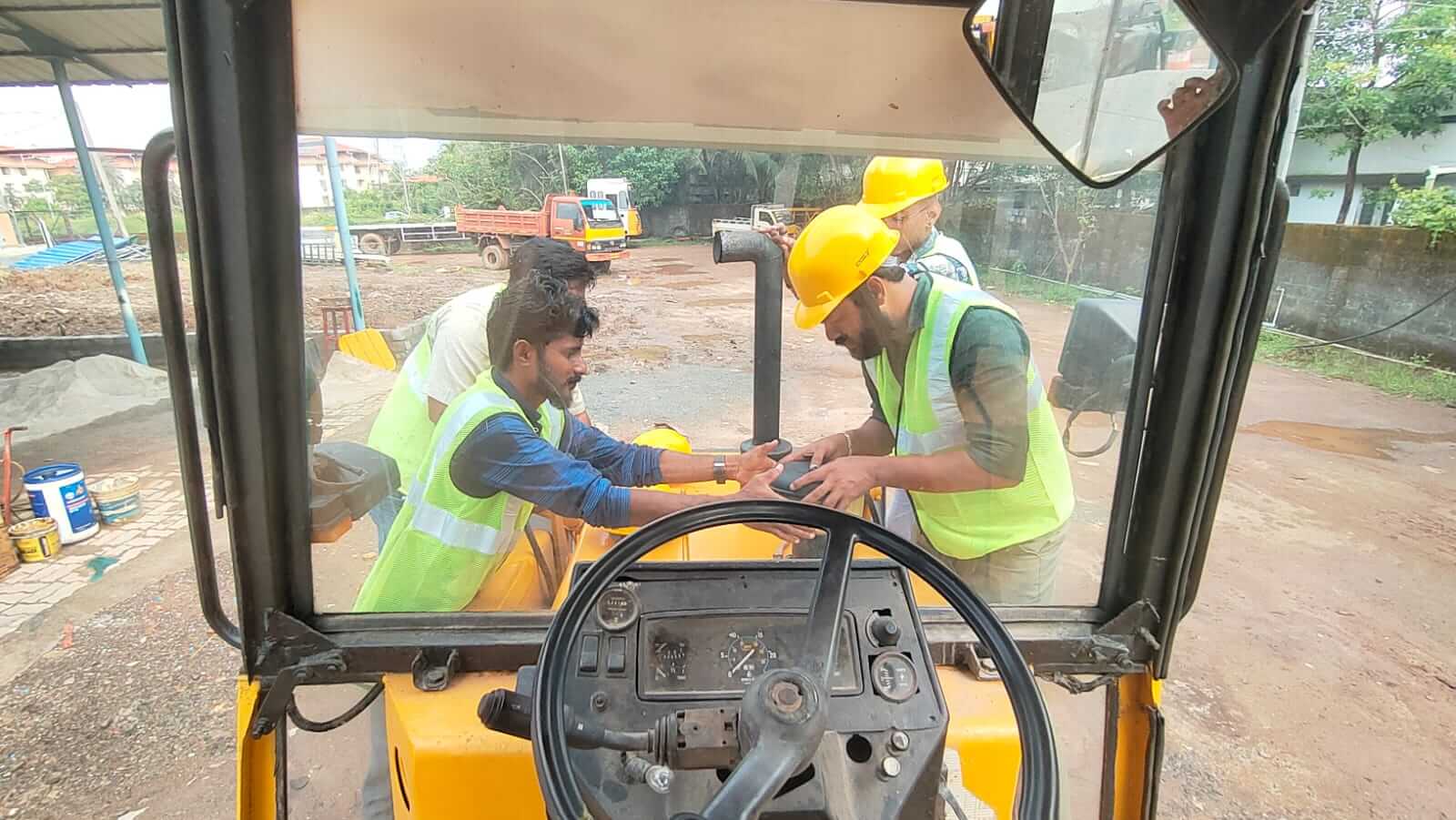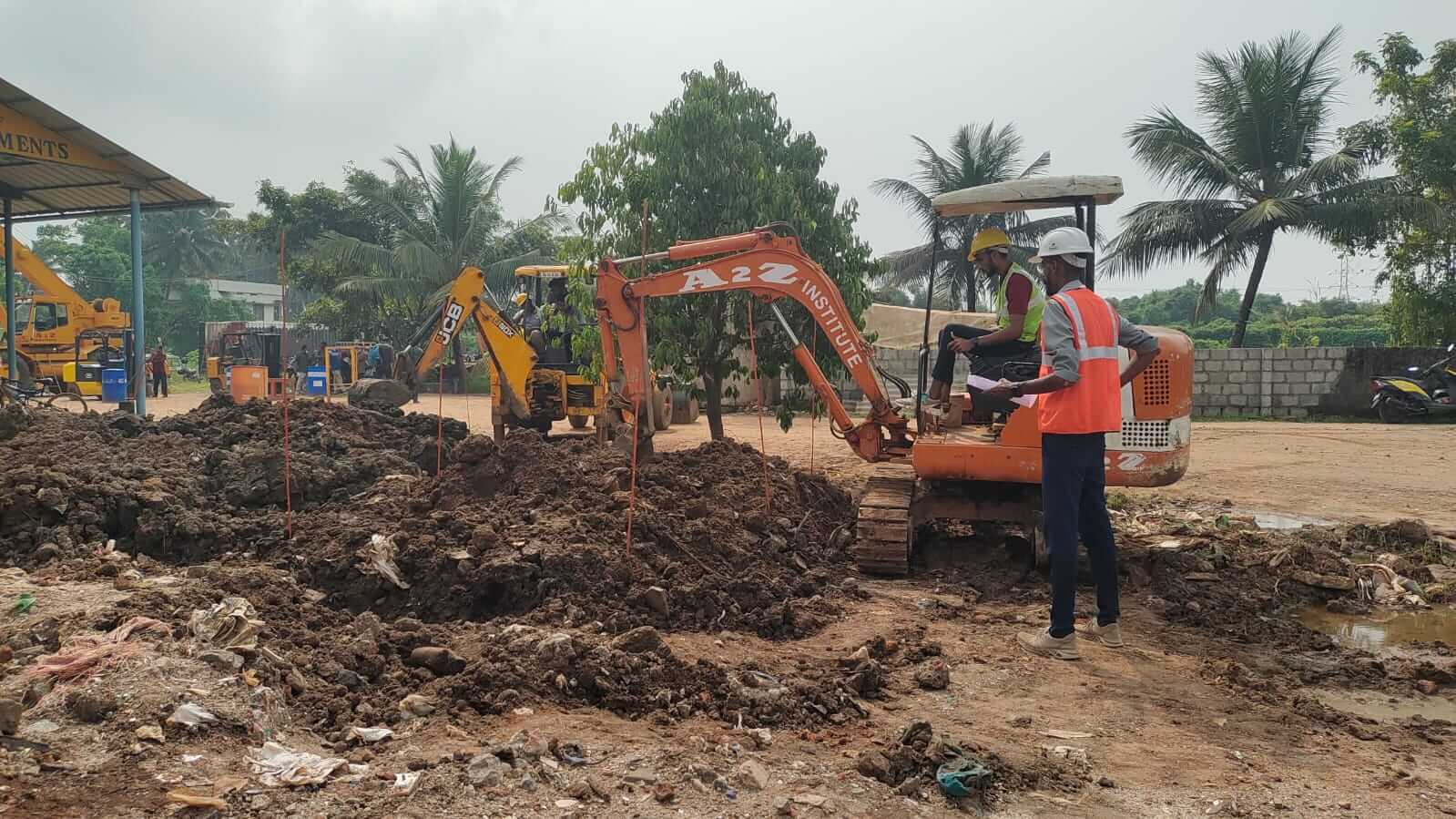


Call: +91 8590085591

Have you always wanted to become a heavy hydraulics equipment operator/technician? If yes, then diploma in hydraulics equipment might be the perfect choice for you. This course covers all aspects of hydraulic engineering from basic concepts to advanced topics.
Hydraulics is a very broad field, covering both industrial applications such as power generation, transportation, agriculture, mining, construction, manufacturing, and civil infrastructure projects.
Hydraulic equipment is machinery that uses a liquid, usually oil, to transmit power and motion. The fluid is pressurized by a pump, and the pressure is used to power hydraulic cylinders or motors that perform the work. Some common types of hydraulic equipment include excavators, bulldozers, backhoes, and forklifts. Heavy hydraulic equipments are used for construction and heavy industries, shipyard, road work, etc.
This course provides students with knowledge of the principles of hydraulics, its application, design, operation, maintenance, safety, and environmental considerations. Students also gain hands-on experience through practical exercises and laboratory experiments.


Our instructors are experts and the training meets all international safety and other standards.
Duration: 6 Months
Eligibility Age: 18 Years
License: Govt License to drive/Operate all heavy equipment. What is Automobile Engineering
To operate hydraulic equipment, the operator typically sits in a cab and uses controls such as levers, pedals, and buttons to operate the machinery. The controls operate valves that direct the flow of hydraulic fluid to the appropriate cylinders or motors, causing the equipment to move or perform its intended function. The operator may also use a joystick to control the movement of the equipment, and a display panel to monitor the performance of the hydraulic system.
Hydraulic equipment is widely used in the construction industry, as it provides a powerful and efficient means of performing a variety of tasks. Some common types of hydraulic equipment used in construction include:
1. Excavators: These are large, tracked vehicles with a hydraulic arm that is used for digging, grading, and moving materials.
2. Bulldozers: These are heavy, tracked vehicles with a hydraulic blade that is used for pushing and leveling earth and other materials.
3. Backhoes: These are smaller, wheeled vehicles with a hydraulic arm and bucket that are used for digging and excavating.
4. Cranes: There are several types of cranes that use hydraulics, including mobile tower cranes, rough terrain cranes, and truck-mounted cranes.
5. ForkliftL A type of industrial truck that is used to lift and move heavy materials. It consists of a narrow, vertical mast that is mounted on a sturdy base, and a set of prongs, or forks, that are used to lift and move pallets and other loads. The mast is raised and lowered using hydraulic cylinders, and the forks can be extended or retracted using hydraulic chains or cables.
Hydraulic equipment is essential for many construction projects, as it provides the power and precision needed to complete tasks efficiently and safely.
There are two types of hydraulic equipment – fixed and mobile. Fixed type consists of stationary machines whereas mobile type consists of movable machines.
Fixed type hydraulic equipment is further classified into three categories – single acting, double acting and triple acting. Single acting equipment operates only once during each cycle of operation. Double acting equipment operates twice during each cycle of operation whereas triple acting equipment operates thrice during each cycle of operation.
It is important for the operator of hydraulic equipment to be trained and familiar with the proper procedures for operating the machinery, as improper operation can result in injury or damage to the equipment. The operator should also be aware of the capacity and capabilities of the equipment, and use it within its designed limits.
Contact us now for course details: https://www.a2zinstituteofheavyequipments.com/contact.html
All Rights Reserved. Copyright@Institute of Heavy Equipments |Website Designing & development by Graphic Consortium